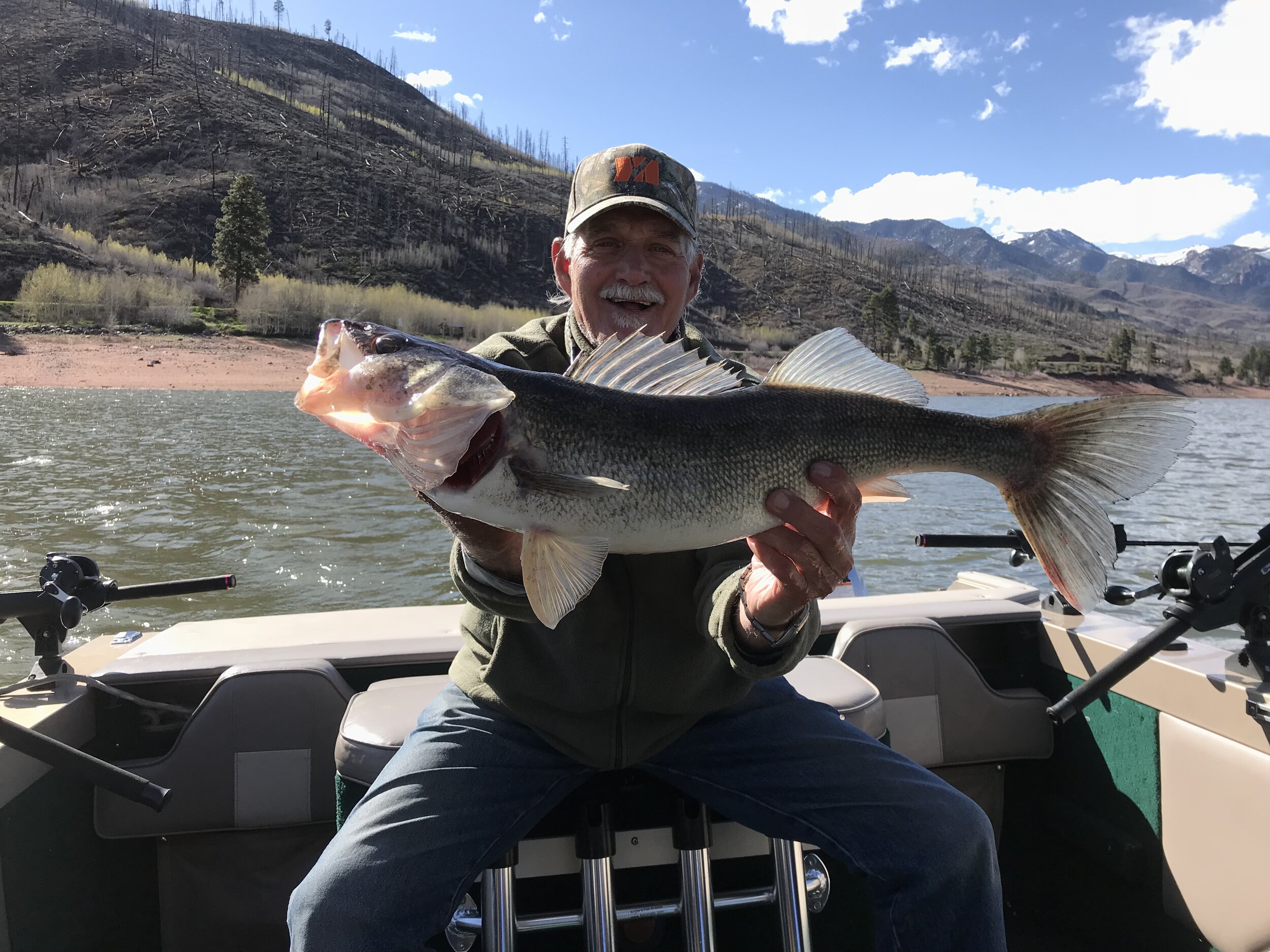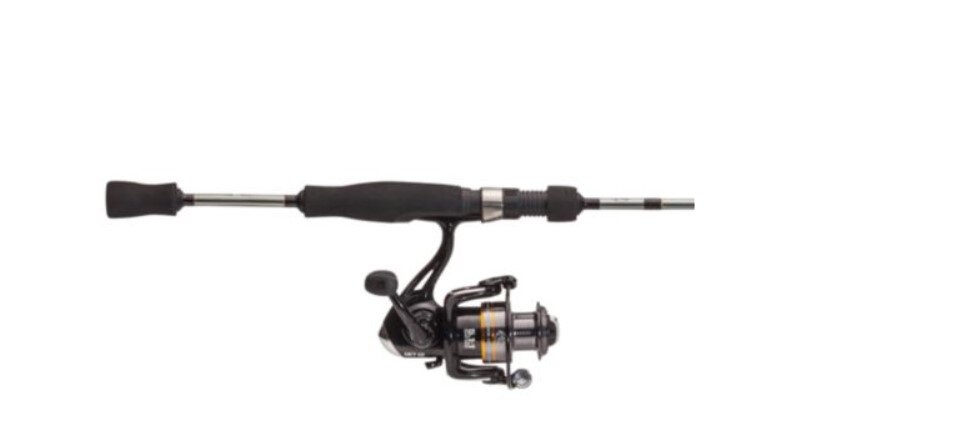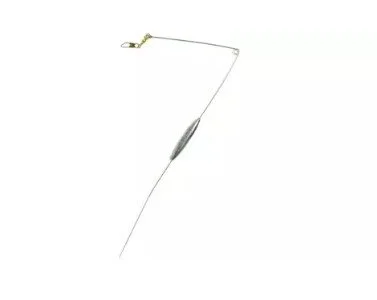Fishing for Walleye
Walleye is bar non, the best tasting fresh water fish you can catch. That said they are also one of the most difficult to catch. Through our guide service years we have caught countless amounts of walleye and have learned the necessary gear, fishing techniques, and where the best places are to find walleye in the desired lake that is being fished.
If you would like to learn what you need to get started, you have came to the right place. Throughout this article we will go through what Rods & Reels to use, what type of fishing line, the most popular walleye fishing rigs, and where to start locating walleye within the lake. If you would also like to learn our guides secrets, to catching Norther Pike we recommend checking out our Need To Know Northern Pike Fishing Tips.
Walleye fishing Rods and Reels
When starting to fish for walleye, your first purchase should be pairing a quality spinning rod and reel combo. There's no need to break the bank by any means, but you should shoot for spending between $80.00-$120.00 for both the rod and reel.
Having a 6'6" Medium, fast action spinning rod, paired with a medium-sized 35 reel, will provide the opportunity to fish most of the popular walleye techniques.
As you gain an understanding of how to fish for walleye, we recommend purchasing a lighter rod and reel combo specifically for jigging and live bait. Ideally, the set up should be a 6' medium light, fast action spinning rod with a medium-sized 30 reel. Having this setup allows the user to feel subtle strikes, as walleye will typically slurp the bait and can be easily missed.
6'6" Medium, Fast Action Spinning Rod with Size 35 (3500) Spinning Reel- Perfect starting rod and reel combo. Ideally used for lures and soft plastics.
6' Medium Light, Fast Action Spinning Rod paired with Size 30 (3000) Spinning Reel. Perfect for sensitive strikes. Ideal for jigging or rigging live bait.
Walleye fishing line
Starting out with only the 6 6" M combo, our guides recommend spooling it with 8 lb. Monofilament. Mono is available at most stores that sell any fishing products and has a forgiving stretch.
If you have both the 6' 6" M combo and the 6' 6" ML combo, we recommend spooling based on the type fishing presentation.
On the 6' ML Combo, we recommend spooling the reel with 12 lb. Fluorocarbon. Floro is virtually invisible underwater and has no stretch, allowing the user to feel the slightest of bits.
For the 6'" M combo, our guides spool 10 lb. braid for the main structure of the line and attach 12 lb. Fluoro as a leader. Braided line allows the user to have a more accurate cast compared to Fluoro.
Walleye Fishing Rigs
Walleye Rigs are the next step for your line up. There are three most popular rigs when targeting walleye, which are spinner Worm Harnes, and slip bobber rig, and jig rigs. Each has its purpose and place, allowing an anger, to cover almost any water.
Walleye fishing Jigs
Jigging can be an extremely successful way to fish for walleye and is one of the most popular techniques. When jigging live bait, it is crucial to use a Fireball style jig.
These have a specialized jig head for walleye that don't have a lead barb, and the hook shank is short with a wide gap. These two factors help with presenting the live bait underwater.
Our guides recommend 1/8 oz. and 1/4 oz., as you will rarely anything larger. While having a smaller jig head, it will not be effective in the typical walleye depth of 15-30 Ft.
When jigging with soft plastic, it is essential to have a long shank with a lead barb. 1/4 oz. jigs are typical when using 4-6" sized soft plastic and 1/8 oz. are for 2-3" sized soft plastic. The plastic should have a long enough gap to get a good hook set.
Slip Bobber Walleye Fishing Rig
For beginners, the slip bobber rig is one of the most popular. This rig allows you to set your bait at any depth, providing a natural presentation.
The first step is the thread slip tie onto the line, then pulling it into place.
Second, Thread the bead, then the float, and tie on your hook.
Third, take a size #7 split shot out and pinch it around a foot above the hook.
Forth, let some line out and adjust the depth of the tie until your bait is a foot above the bottom. Make sure your slip bobber is upright.
Fith, let the wind/current take your float, allowing your bait to cover more area. Make sure to adjust the depth as needed.
When fishing with live bait, make sure you know the regulations for where your fishing. Some lakes only allow worms, while others allow minnows, leeches, and other species.
Spinner Worm HARNESS
A more advanced technique is using spinner rigs with a double-hook harness and bottom bouncer to support nightcrawlers.
Bottom Bouncer
Worm Harness
For this technique, you must be trolling, having your rig roughly 50-100 yards behind the boat, at a pace between 1-2 MPH. For the bottom bouncer, our guides use a 1-2 oz weighted system.
Where to Find Walleye in the Lake
Walleye are most commonly caught between 10-40 ft. To find where they’re hiding, you must understand what kind of structure is under the water. Having a good understanding what kind of structure is out there is idea for increasing your chances of catching a Walleye.
Optimal Walleye Fishing Structure
If you're able to find structure that supplies cover for walleye, your chances of finding fish are increased. Walleye will travel in schools, so the larger the cover, the better.
For example, a large section of weeds across rock piles or a flat. Look for areas where cover transitions: like an edge of a weed line or a drop-off. Walleye like to hide within the cover and ambush baitfish.
Examples of Fishing Structure/Cover
Hole: Is usually a crater shaped indent, having the deepest point located near the center.
Hump: Is a risen section of ground where one end is longer than the other. A good way to visualize a hump is as it were a sunken hill or mound.
Flats: Is a long section of ground with a similar depth spanning a large distance.
Spot-on-the-spot: Is typically where a transition of depth occurs, almost like a drop-off.
Conclusion
Walleye fishing takes patients, and is a consistent learning process. We hope these tips help you catch a walleye of your dreams! If you do end up catching one please tag us on Instagram or Facebook! We love to hear success stores and in general love seeing pictures of fish.



